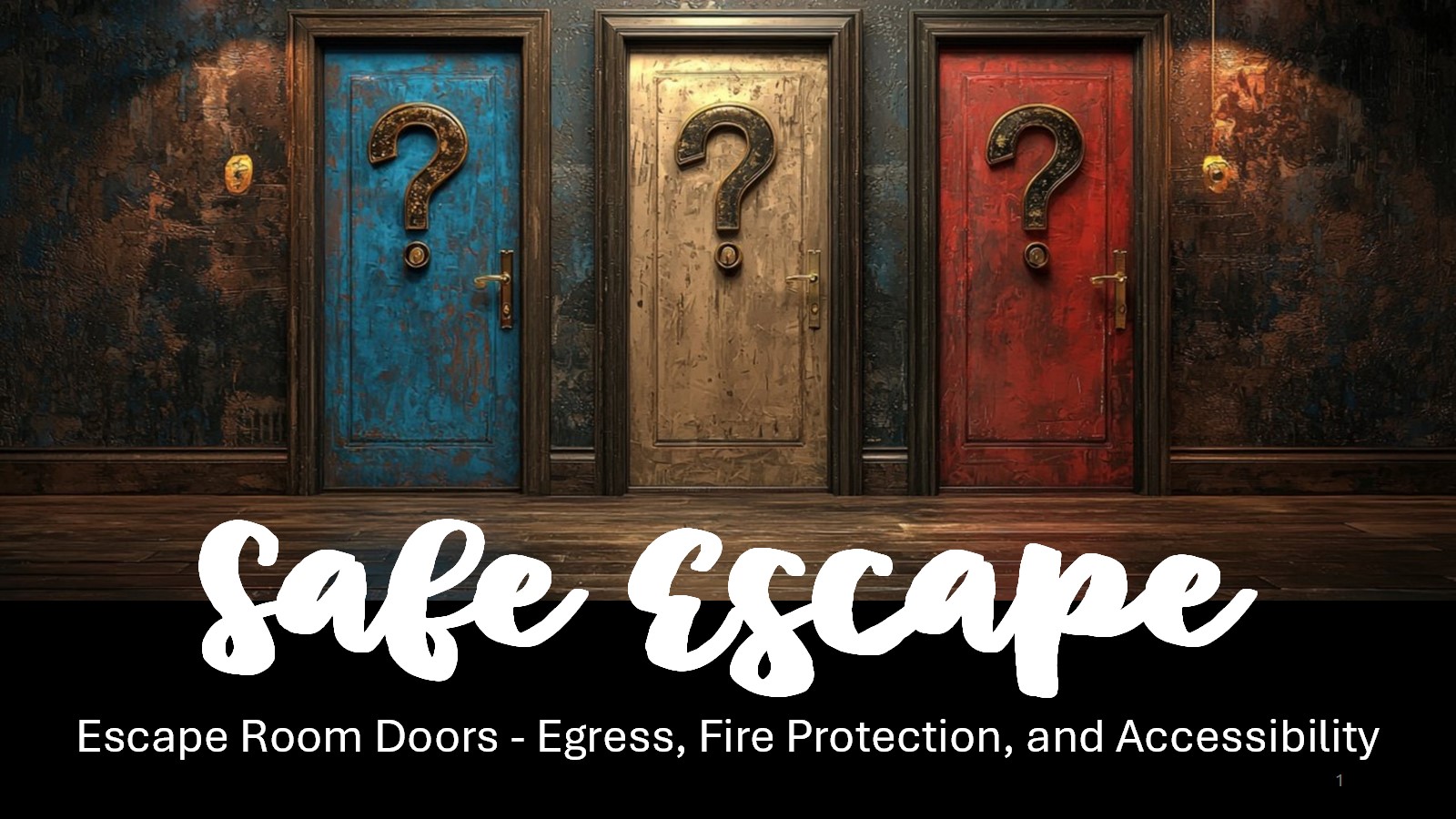 Over the weekend I had the privilege of presenting on egress, fire protection, and accessibility for escape rooms at the Reality Escape Convention: RECON. The audience included many owners of escape room businesses, as well as escape room designers. I was pleasantly surprised by how interested they were in the topic – they definitely know how important code compliance is for their business.
Over the weekend I had the privilege of presenting on egress, fire protection, and accessibility for escape rooms at the Reality Escape Convention: RECON. The audience included many owners of escape room businesses, as well as escape room designers. I was pleasantly surprised by how interested they were in the topic – they definitely know how important code compliance is for their business.
If you’re not familiar with escape rooms, they are entertainment spaces where teams of people work to solve clues in order to “escape”. I’ve visited a few and some of them are so creative! These games have become popular worldwide and it’s a growing industry. According to Yahoo Finance, in 2024 the escape room market was 9.27 billion dollars, and is predicted to grow to 24.43 billion by 2030.
Some of the first escape rooms physically locked players inside of the room until they solved the clues to unlock the door. In 2019, an escape room fire in Poland resulted in the deaths of 5 teenagers; the “game” was to find the door handle and the girls had not yet solved the clues. The attendant who was supposed to monitor the game had left the building to go get change when the fire occurred in the waiting area. I wrote about the fire in this post.
The fire in Poland resulted in the immediate inspection of thousands of escape rooms around the world. Many escape rooms were closed, temporarily or even permanently. Escape room designers and business owners had to change the way the games were played, and to learn more about the life safety requirements for these facilities. AHJs in many jurisdictions became vigilant about the means of egress for escape rooms.
In the 2021 I-Codes, a definition for a “puzzle room” was added, as well as some criteria for escape room egress:
PUZZLE ROOM: A puzzle room is a type of special amusement area in which occupants are encouraged to solve a challenge to escape from a room or series of rooms. A puzzle room is sometimes referred to as an escape room.
411.5 Puzzle room exiting. Puzzle room exiting shall comply with one of the following:
1. Exiting in accordance with Chapter 10.
2. An alternative design approved by the building official.
3. Exits shall be open and readily available upon activation by the automatic fire alarm system, automatic sprinkler system, and a manual control at a constantly attended location.
I was really surprised to see #3, as it would allow electrified locks that were released by the fire alarm, sprinkler system, and an attendant. The codes don’t usually rely on attendants to facilitate egress, with the exception of controlled egress in certain types of health care facilities. Considering that the attendant in Poland left the building, possibly affecting the outcome, I’m not surprised that the I-Code requirements changed in the 2024 edition. The definition remains, but the previously-added section specific to puzzle rooms has been removed. The 2024 editions now read:
411.1 General. Special amusement areas having an occupant load of 50 or more shall comply with the requirements for the appropriate Group A occupancy and Sections 411.1 through 411.6. Special amusement areas having an occupant load of less than 50 shall comply with the requirements for a Group B occupancy and Sections 411.1 through 411.6.
Exceptions:
1. Special amusement areas that are without walls or a roof and constructed to prevent the accumulation of smoke are not required to comply with this section.
2. Puzzle rooms provided with a means of egress that is unlocked, readily identifiable and always avail-able are not required to comply with this section.
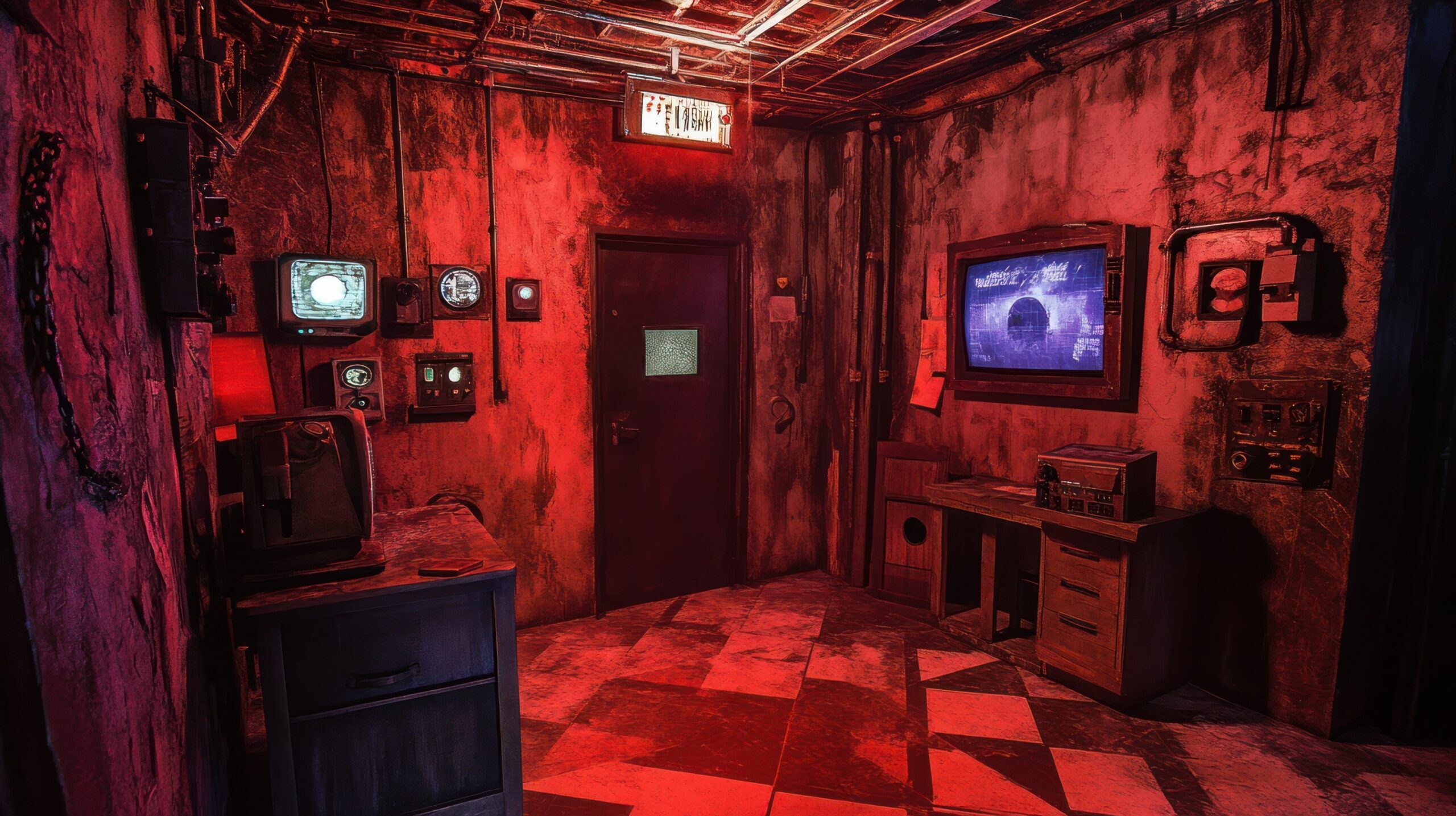 As you can see, locks released by the fire alarm/sprinkler system/attendant are no longer listed in the 2024 code, although it’s possible that an AHJ could approve an alternative locking arrangement if the requirements for a special amusement building were met. These requirements are not easy to meet and can be very expensive, so most escape room owners and designers will likely opt for Exception 2 – if the room allows free egress, the requirements for special amusement areas do not apply.
As you can see, locks released by the fire alarm/sprinkler system/attendant are no longer listed in the 2024 code, although it’s possible that an AHJ could approve an alternative locking arrangement if the requirements for a special amusement building were met. These requirements are not easy to meet and can be very expensive, so most escape room owners and designers will likely opt for Exception 2 – if the room allows free egress, the requirements for special amusement areas do not apply.
As always, there may be state or local modifications or ordinances to these requirements, but generally speaking, it is MUCH easier to provide egress doors that meet all of the code requirements than to comply with the mandates for a special amusement area. My presentation covered topics like opening size, door swing, operation of hardware, fire door basics, accessibility, and some of the different types of hardware that could be used. Many of the attendees were surprised that electromagnetic locks were not recommended (by me)!
As soon as the recording of my presentation is ready, I’ll be sharing it here along with the page that I made for the conference attendees with links to more in-depth articles and videos. My hope is that others who need this information will find it here on iDigHardware. I also created a checklist summary to help prepare for a visit with the AHJ. Stay tuned for that!
You need to login or register to bookmark/favorite this content.


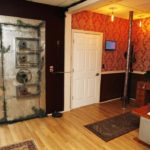

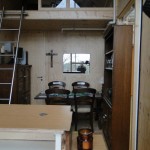



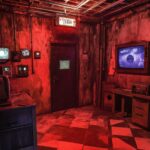
Lori,
Thanks for this info. I am looking forward to the other info as well as the recording of your presentation. Thank You!!
Hi Kevin –
Do you run into escape rooms in your jurisdiction? I’d be interested to know how you handle them.
– Lori
Lori,
I do not. The closest I came was a Haunted House set up at one of my universities in town, I have two!!! I made them do a number of things before I approved the event and the next year….No request!! I was ready to let them do it, but the Administration didn’t want to put any money into the event.